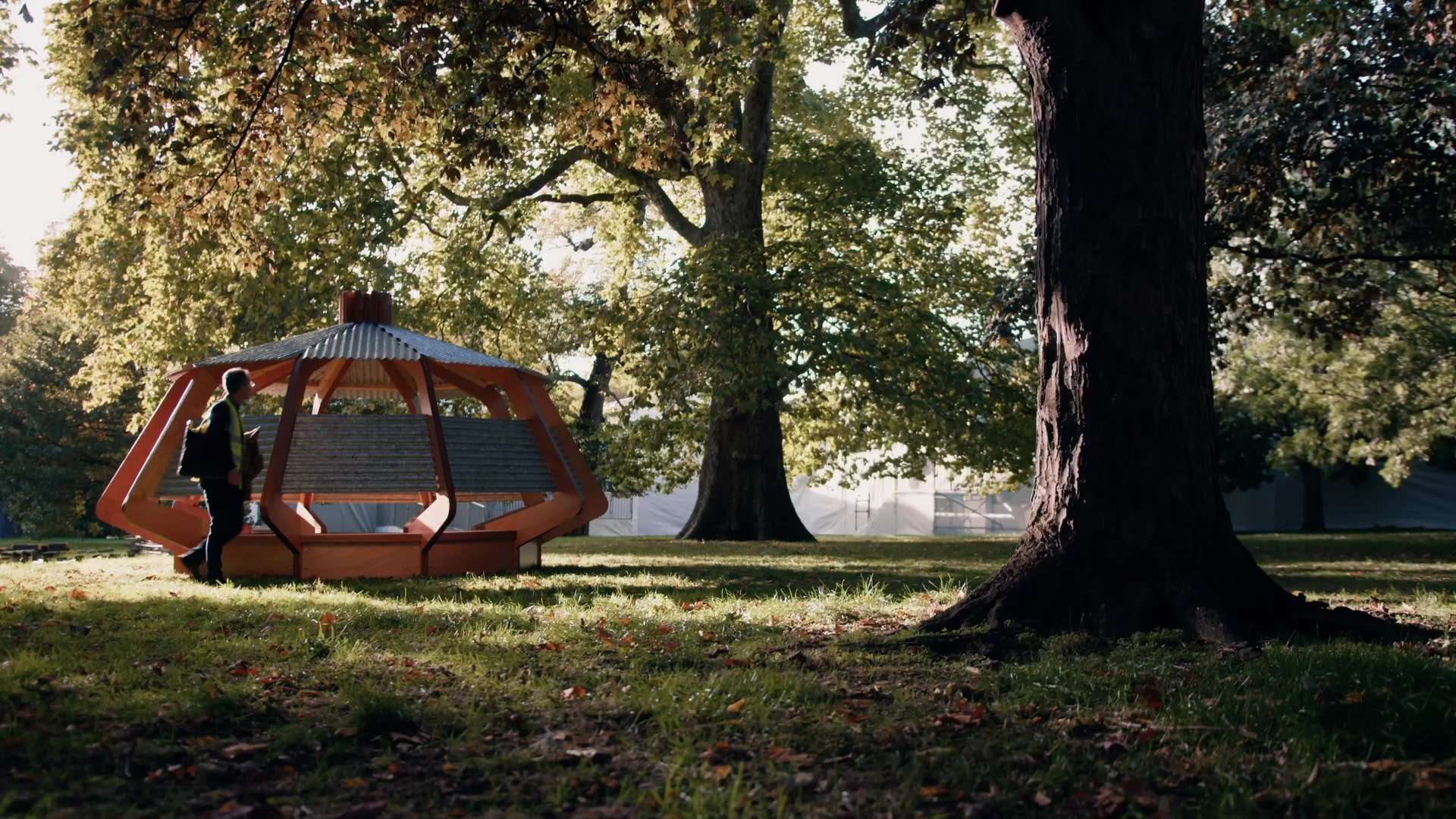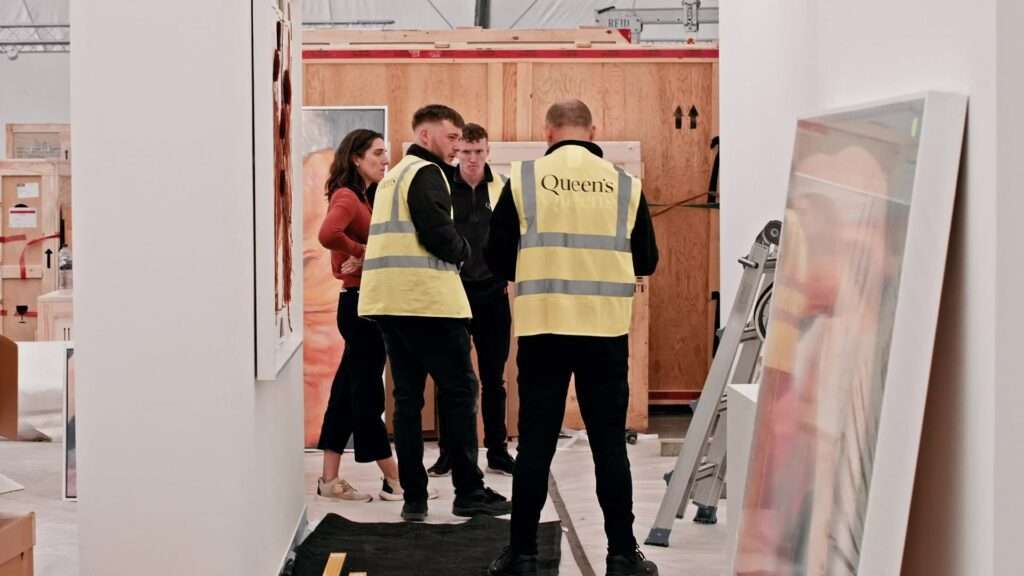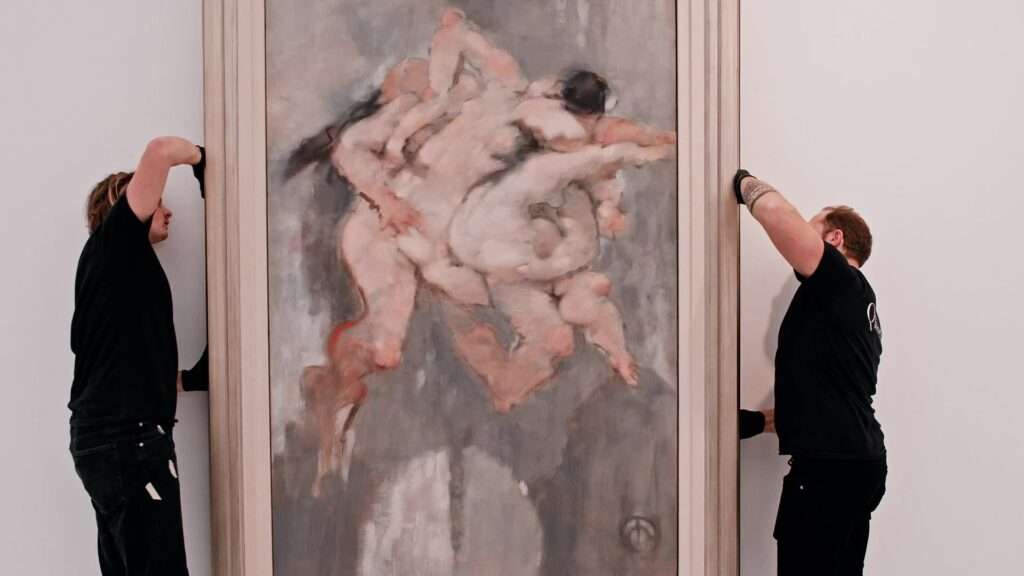
Since the first Frieze London in 2003, I have worked at every Frieze London and Frieze Masters fair. The rhythm of each year is familiar: an intense week of preparation, carefully timed deliveries into Regent’s Park, a busy period during the previews, and then a concentrated pack-down. While the pattern is consistent, no two editions are exactly the same. The mix of artworks, clients, and conditions always brings something new.
The week before the fair is the busiest period. Overseas shipments arrive daily and are cleared through customs, while local collections are gathered from galleries and storage. Every case is logged, measured, labelled and matched to its booth. This is also when client-specific requirements are addressed, whether that means installation support for a large sculpture or additional handling measures for a fragile work. Having a team you trust—from experienced technicians to warehouse and customs staff—makes this stage run smoothly and keeps everything on track.

Once the site opens for access, deliveries are managed in timed slots to keep traffic flowing. Artworks are taken directly to stands, unpacked if required, and positioned for installation. Coordination with gallery staff and fair organisers is constant, particularly when moving oversized works or meeting complex installation requests. Years of working within Frieze’s operational framework means we can navigate these moments efficiently and keep things moving to schedule.
Once the fair is open to VIPs and the public, logistics continues at pace. Sales lead to immediate activity, such as transferring works from temporary admission to free circulation, collecting them from booths, and delivering to buyers — sometimes the same day. Booth rehangs are also common, with artworks being installed mid-event as sales are made or loans are agreed. These movements happen while ensuring the fair environment remains uninterrupted for visitors.

As the fair draws to a close, the pace increases again. Galleries confirm which works have sold and which are to be returned. Empty cases are brought back to the booths, and final pack counts are checked before any items leave the site. Every movement is time-critical, from local deliveries to outbound shipments headed overseas. It is a stage where the coordination and reliability of the team are essential, with everyone focused on meeting the deadline.
In the two weeks following the fair, sales are delivered to buyers, local returns are completed, and overseas works are dispatched. This often runs alongside preparations for the next major event, sometimes involving the same clients and artworks.
Familiarity with the fair’s processes, combined with an understanding of client requirements, is what allows the week to run smoothly. Knowing how to meet a registrar’s specific packing standard, how to work within the organiser’s access parameters, or how to adapt to a last-minute change in installation plans can make all the difference. Alongside that knowledge, having a team you know and trust—and who know the fair as well as you do—provides the confidence to handle whatever the week brings while keeping the focus where it should be: on the artworks themselves.
Jonathan Kennedy, Client Services Manager